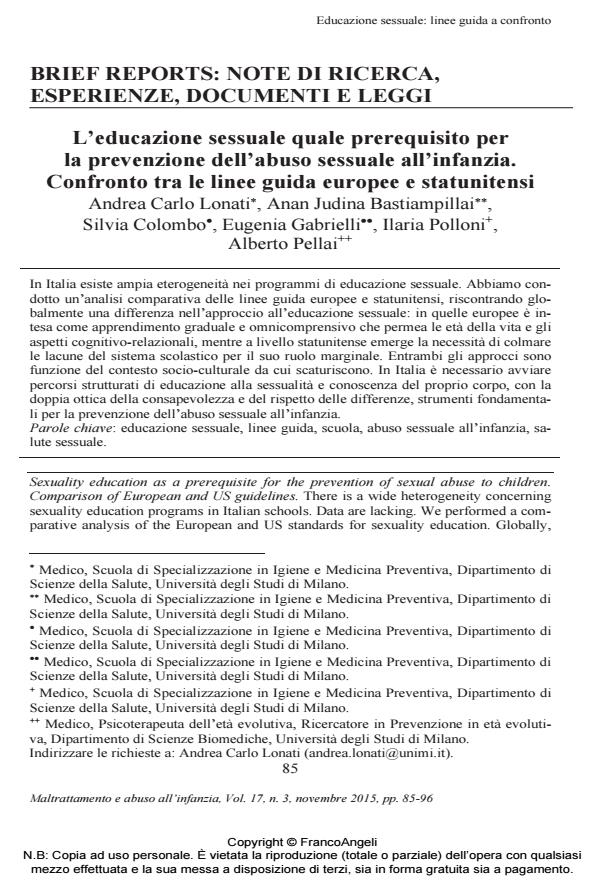Sexuality education as a prerequisite for the prevention of sexual abuse to children. Comparison of European and US guidelines
Journal title MALTRATTAMENTO E ABUSO ALL’INFANZIA
Author/s Andrea Carlo Lonati, Anan Judina Bastiampillai, Silvia Colombo, Eugenia Gabrielli, Ilaria Polloni, Alberto Pellai
Publishing Year 2015 Issue 2015/3
Language Italian Pages 12 P. 85-96 File size 96 KB
DOI 10.3280/MAL2015-003005
DOI is like a bar code for intellectual property: to have more infomation
click here
Below, you can see the article first page
If you want to buy this article in PDF format, you can do it, following the instructions to buy download credits

FrancoAngeli is member of Publishers International Linking Association, Inc (PILA), a not-for-profit association which run the CrossRef service enabling links to and from online scholarly content.
There is a wide heterogeneity concerning sexuality education programs in Italian schools. Data are lacking. We performed a comparative analysis of the European and US standards for sexuality education. Globally, there is a different approach in the European guidelines, considering sexuality education as a gradual learning and comprehensive process throughout lifetime. In contrast US standards underline the need to fill gaps in the current national education system. Both approaches are a function of the socio-cultural context from which arise. In our country it is important to define structured pathways of sexuality education based on knowledge of own bodies with the dual perspective of awareness and respect for differences, as they are key tools for the prevention of child sexual abuse.
Keywords: Sexuality education, standards, school, child sexual abuse, sexual health
Andrea Carlo Lonati, Anan Judina Bastiampillai, Silvia Colombo, Eugenia Gabrielli, Ilaria Polloni, Alberto Pellai, L’educazione sessuale quale prerequisito per la prevenzione dell’abuso sessuale all’infanzia. Confronto tra le linee guida europee e statunitensi in "MALTRATTAMENTO E ABUSO ALL’INFANZIA" 3/2015, pp 85-96, DOI: 10.3280/MAL2015-003005